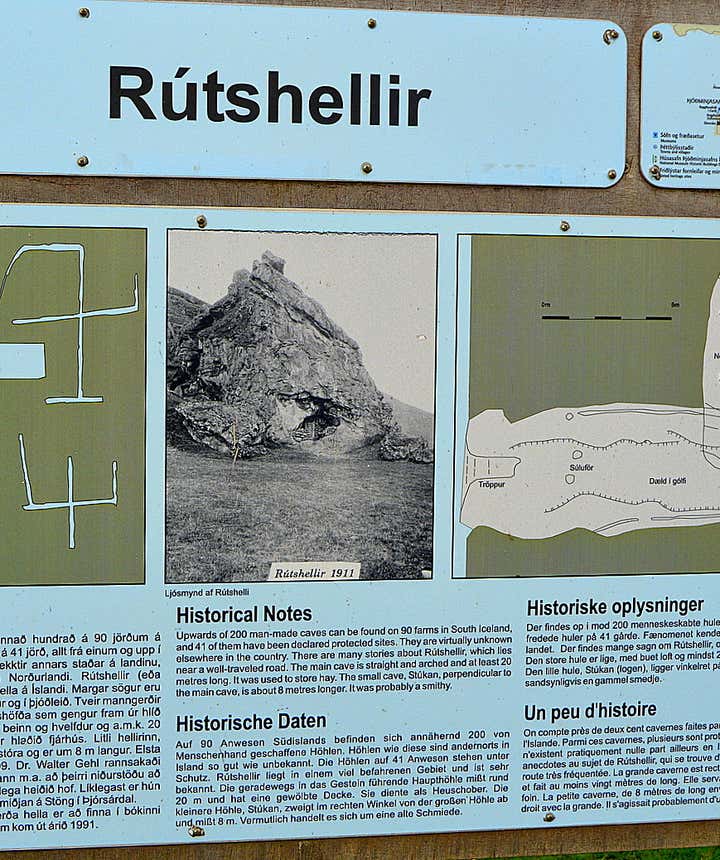
The Peculiar Rútshellir Cave in South Iceland

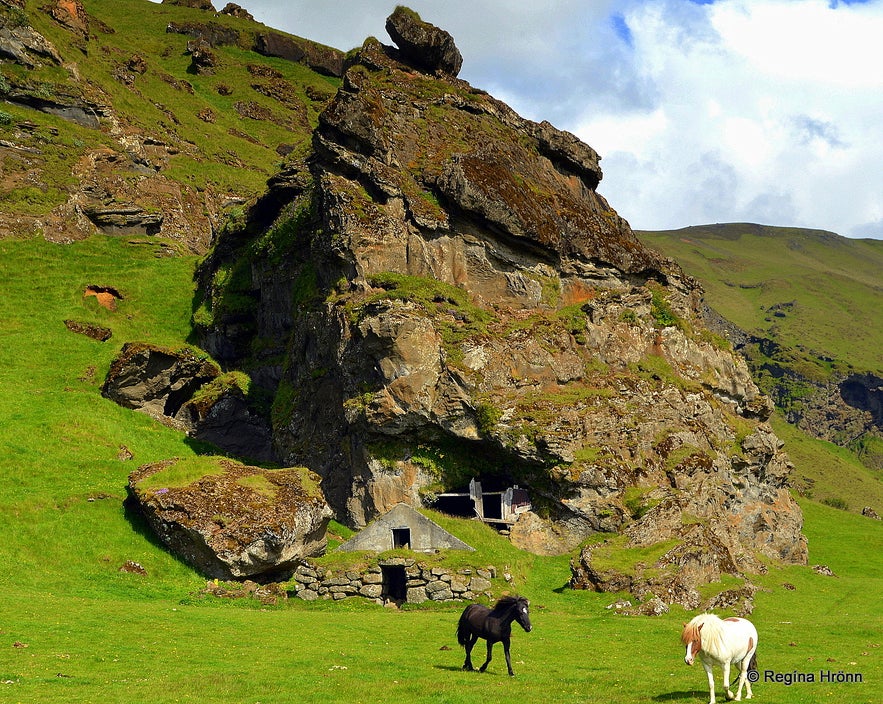
In South Iceland, by the beautiful Eyjafjöll mountains several man-made caves can be found. One of them is just by ring-road one and thus easily accessible.
The cave is located in a peculiar, big tuff pillar of rock. There are ancient habitations in the rock and a cave called Rútshellir cave or the Cave of Rútur.
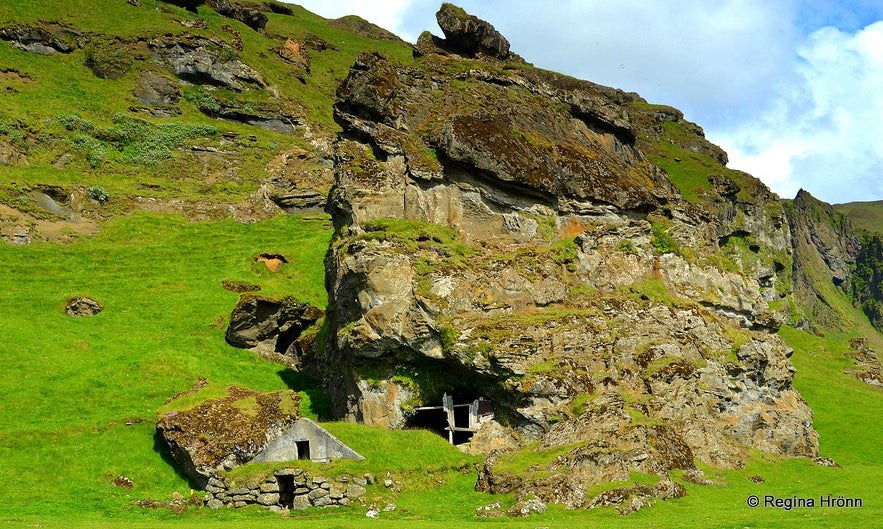
Once when I visited Rútshellir, I found a dead sheep inside the cave - the smell was overwhelming. When we passed Rútshellir on our way back two days later, a ram was standing proudly on the top of the turf sheepcote. It was quite a magnificent sight.
There are two man-made caves in the rock. The main cave is arched and at least 20 meters long and 2.5 meters high on average. It was used as an outhouse, for storing hay, and at a certain time, stockfish was stored in this cave. People might also have lived in the cave.
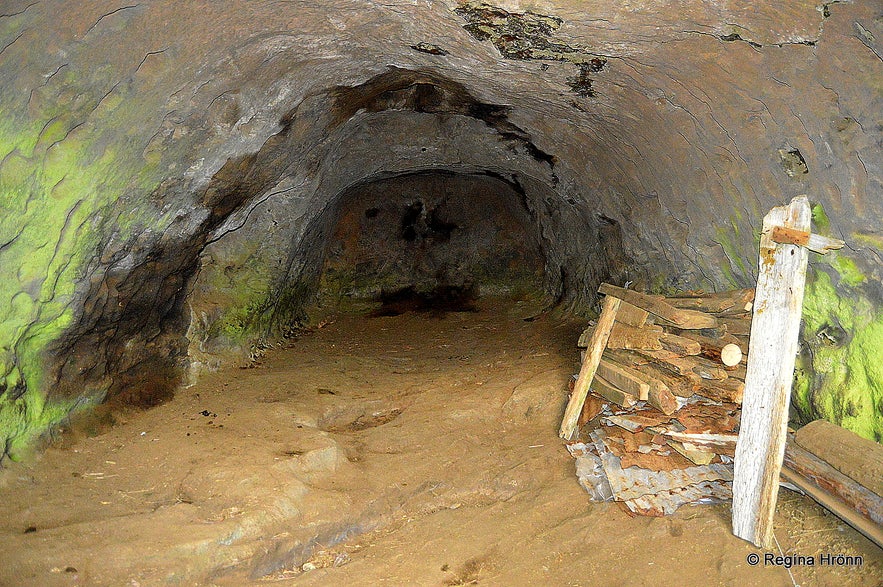
Inside Rútshellir cave
There are some structures in front of the cave, an old sheepcote, first built around 1917, so it looks like somebody lives in the rock.
These structures have been rebuilt, so now they look like this:
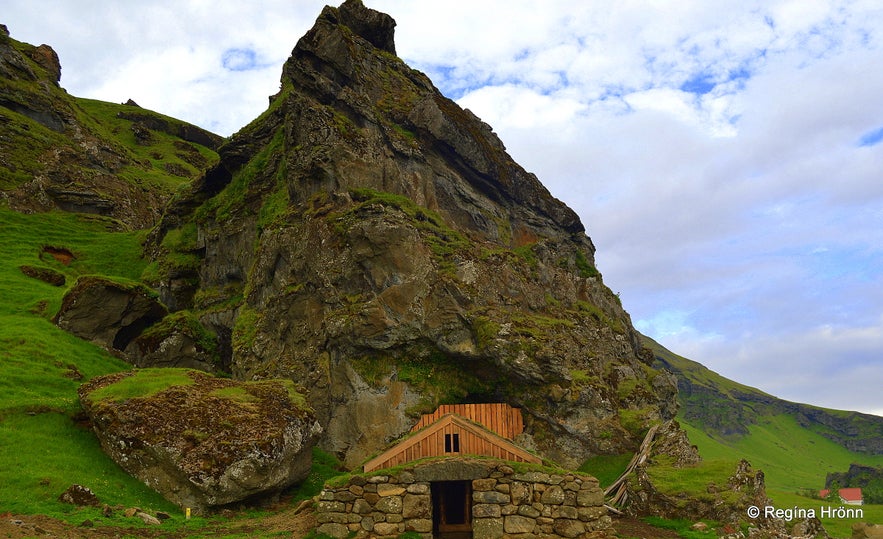
The smaller cave is called Stúkan. The floorage is 8.05 x 2.40 m2. It might have been a heathen temple, but it might also have been a smithy. An opening connects the two caves.
In one place you will find a cross carved into the sandstone. It wasn't until my 3rd visit to the cave that I noticed the cross. Can you spot it in my photo below? You will see it on the upper level above the "bed".
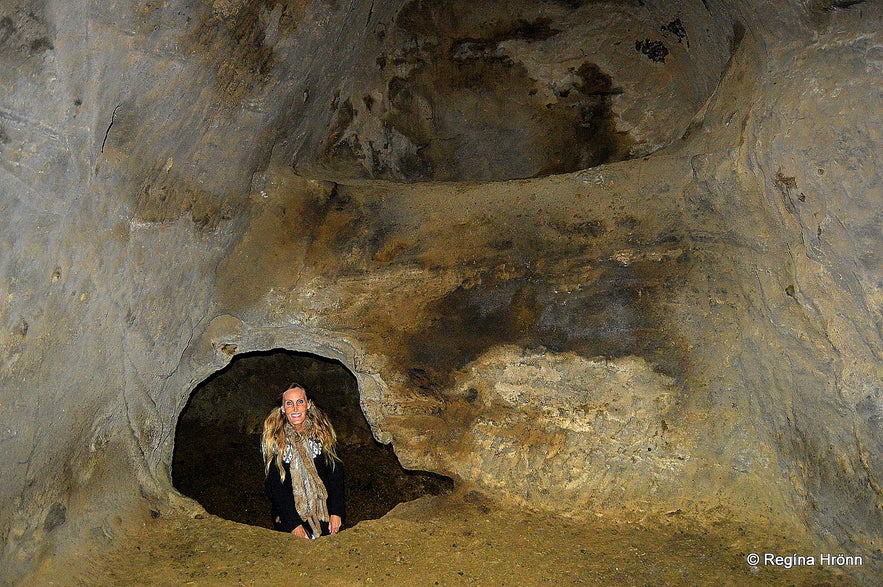
Inside Rútshellir cave
The story goes that the man Rútur lived in the man-made cave, some say he was an evil troll, others say he was a looter, and other people say he was an evil chieftain. The people in this region attacked him and killed him by making a hole in the cave underneath his bed. They then ran him through with spears, while he was in bed.
Others say that they made a hole in the cave from outside and ran him through that hole with spears and killed him. They were too afraid of him to want to meet him out in the field.
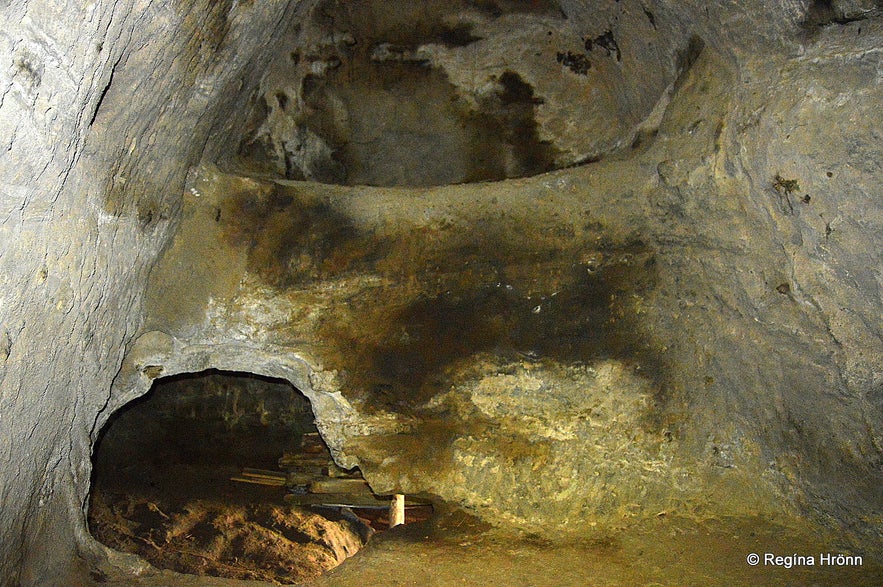
Inside Rútshellir cave
After killing him they were still afraid of him even though he was dead and one of his killers, Björn, ran away up to the mountain, Bjarnarfell, which bears his name ever since, and yet another fled into the wilderness of Iceland.
(Translated into English from Þjóðsögur Jóns Árnasonar - the Compilation of Folklore by Jón Árnason)
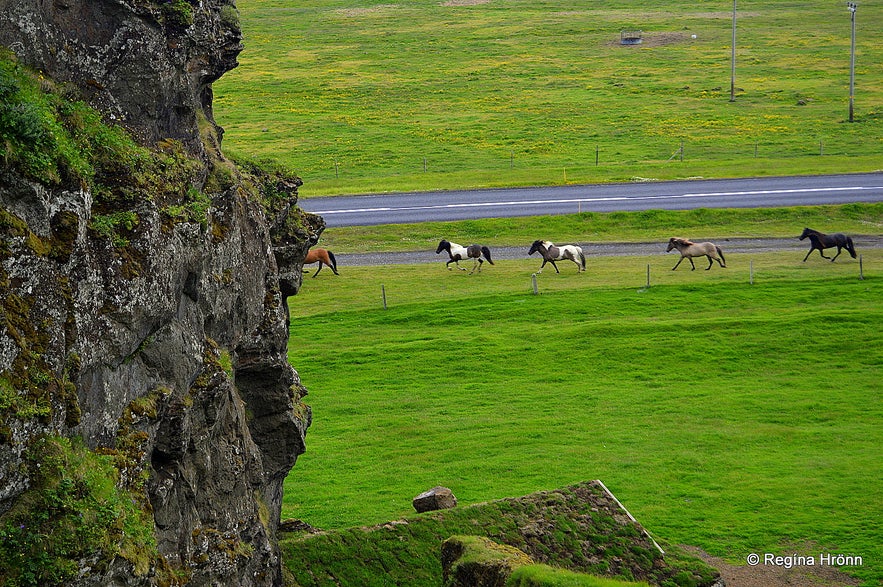
Icelandic horses running by Rútshellir cave
But on the website of Katla Geopark, I found another version of this legend:
"One such legend involves a man called Rút and his slaves who wanted to kill him. They proceeded to carve a hole under the ledge where Rút slept, so they could, later on, kill him with spears while he was sleeping. One night after arriving home, as he prepared to sleep, he discovered their plot to kill him. He chased the slaves into the mountains and killed them all; Sebbi by Sebbasteinn rock, Högni by Högnaklettur rock, Ingimundur by Ingimund rock, Björn by Mt. Bjarnarfell, but these are all known names in the vicinity of the cave. The last slave, Guðni was killed on the Eyjafjallajökull glacier, and this place is called today Guðnasteinn or Guðni's stone".
I wonder which one of these two legends is more accurate?

Rútshellir cave
In 1936, Nazis from the SS-troops, Ahnenerbe, seem to have investigated Rútshellir thoroughly. Ahnenerbe was a science academic wing in Nordic science under the command of Heinrich Himmler.
They were very much into the idea of the strong, pure Nordic race and were looking for ruins of old temples in Iceland. They thought that there might have been such an old temple in Rútshellir.
The Nazis made a thorough description of the cave, and they liked to believe, true or false, that the cave had indeed been an advanced heathen temple.

Inside Rútshellir cave back in 2015
They came up with the idea that the large cave had been the banquet hall, where the Vikings had sat by the longfire. And that the smaller cave had been used for the rites and offering of animals.
But falsifications were made and Paul Burkert, who had been sent to Iceland on a research expedition, was thrown out of the SS-troops and deprived of the grants he had got.

Carved stiles by Rútshellir cave
Some people have seen light in the rock, leading us to believe that Hidden People live here.
The rock is preserved and is listed on the Natural Heritage Register.
One can stop to take photos here and enter the cave Rútshellir.
There is an information sign by the road and new, carved stiles via which one can pass from the parking to the cave.

Rútshellir cave in 2020
Slabs have also been added which lead like a trail to the cave. I love this new addition :)
Let's always be respectful and tread lightly and leave nothing behind but footprints.

The information sign by Rútshellir cave
To reach this area, you can either rent a car in Reykjavík for a day or two.
Also, check out the most popular guided tours of the South Coast of Iceland:
The rock is located some 3 km west of Skógafoss waterfall by ring-road 1. GPS: N63° 31' 35.245" W19° 33' 3.601".
Close to Rútshellir cave, just a little further east, you will find another similar rock called Drangurinn in Drangshlíð, about which I have written another travel-blog, as there are elves in that rock!
Drangurinn in Drangshlíð and the Elves in the Rock
And if you want to visit more caves in Iceland then I have written a travel-blog with all my favourite caves in Iceland:
A Local's Favourite Caves in Iceland
Have a lovely time in South-Iceland! :)
Ref: Manngerðir hellar á Íslandi by Árni Hjartarson, Guðmund J. Guðmundsson og Hallgerður Gísladóttir
Mannvist: Birna Lárusdóttir
Inne ciekawe blogi
Gorące źródła - Hrunalaug
Z czego słynie Islandia? Zorza polarna, wulkany, lodowce, gejzery i oczywiście gorące źródła! Hruni, a właściwie Hrunalaug to gorące źródło w malowniczym otoczeniu, znajdujące się w w pobliżu miejscowCzytaj więcejPolowanie na Zorzę
Zobaczenie zorzy polarnej to marzenie wielu osób. Zorza jest dla mnie czymś magicznym i niepowtarzalnym, zachwyca mnie za każdym razem. Czy faktycznie tak ciężko ją dostrzec? Otóż nauczyłam się, że niCzytaj więcejO pisaniu na Guide to Iceland
Mam wrażenie, że na Islandii bardzo wiele rzeczy staje się jasnych. Chodzi o podejście do świata, do własnej osoby, do innych, którzy realnie wpływają na Twoje życie. Islandia zmusza swoją surowościCzytaj więcej

Pobierz największą platformę turystyczną na Islandii na telefon i zarządzaj wszystkimi elementami swojej podróży w jednym miejscu
Zeskanuj ten kod QR za pomocą aparatu w telefonie i naciśnij wyświetlony link, aby uzyskać dostęp do największej platformy turystycznej na Islandii. Wprowadź swój numer telefonu lub adres e-mail, aby otrzymać wiadomość SMS lub e-mail z linkiem do pobrania.















